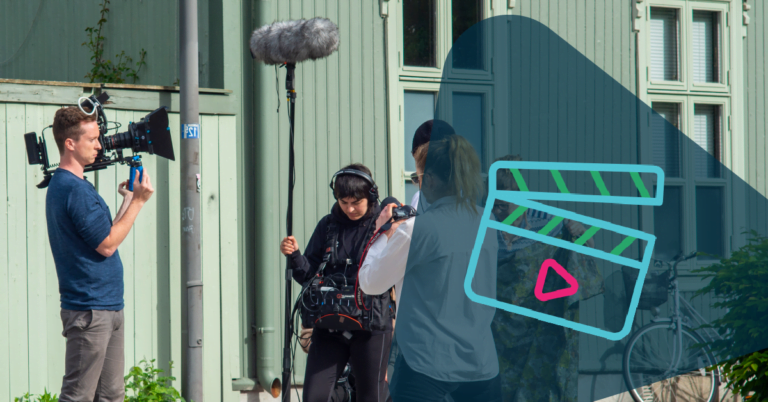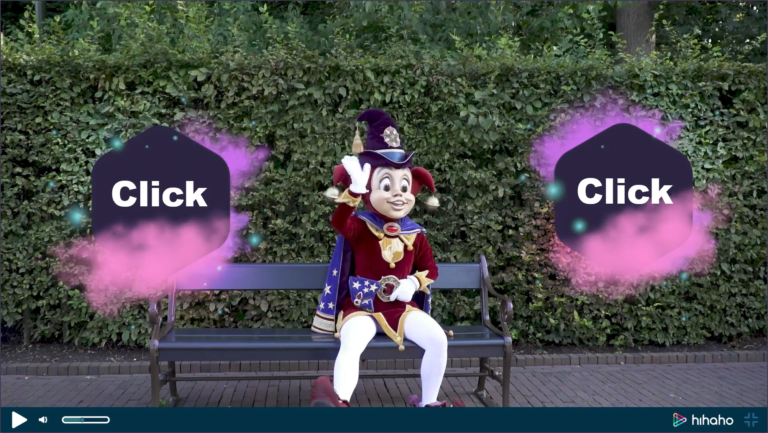So you’re about to be a scriptwriter! I’m glad for you, because writing scripts is one of the most creative tasks there is! Rule number one: there are no rules because your creativity should not be limited.
But of course, we can give you some advice. Here we go!
Step 1: Your goal
Before you put anything on paper, you have to think about your goal. What is it you want the viewers to know after they’ve watched your video? Our learning videos are usually no longer than three minutes, so it’s brief and to the point, short and sweet. We know it’s harder for people to concentrate for a long time. So, when you want to stay between those three minutes, it’s very important to choose one topic, one road. Don’t create different paths to the right and the left, stay on topic, make your message clear.
When you create a longer video, we can say the same thing, but in this case, we advise you to choose one topic per scene.
Step 2: Your audience
Who do you want to appeal most to? Men or women, young or old people, theoretical or practical people? When writing your script, imagine a person you’re writing for, someone who is representative for your audience. It’s also important to think about what knowledge your audience has. Do you have to explain a lot or only a little? And should you use simple or difficult language? Content that is either too easy or too difficult will make your audience stop watching.
Step 3: Your story
So you’ve thought about your goal, your message and your audience. Now it’s time to put it all into a story. A good story. Nothing will be remembered better than a good story. We will give you some ideas to build a storyline for a learning video.
Note: when you create multiple videos or multiple scenes, it essential that they are not all built the same way. Diversity keeps your short video or scenes interesting.
1. Start with the wrong situation, show the bad consequences. Ask the viewer about the best way to prevent this and put then the correct situation on the screen. We like this storyline, because the incorrect situation can be funny and the viewer has to think for himself.
2. A presenter can talk straight in the camera to introduce a subject. At the end of the video, he can also give a summary. Inbetween, we see the situation in real life.
3. A presenter can also talk to main characters in the video. “Could you show us how you do this?”
4. Furthermore, main characters can talk to each other. For example, customers can compliment or complain about something in the store. “I wonder how this will go today.” As a writer, you can choose if they only talk to each other, talk to some (in)visible interviewer or do both.
5. In this option, main characters also discuss something, but this time, it’s not as a customer. For example: a supervisor explains something to a new co-worker. It’s also possible two colleagues reflect on a situation. In this type of story, you can use flashbacks and let them comment on what happened.
6. Voice-over. “Now, we’ve arrived in the dancing room of the theatre. The inspector has to find out how many people use this room.” Then, the story continues, maybe with a question for the viewer, a conversation between the inspector and the owner, or the inspector coming up with a solution.
7. Scenario. Have you seen the Netflix film Bandersnatch? In this story, the viewer can decide how the story continues. You can use hihaho to create scenarios. Click here to learn more about this.
8. A quiz. One time, we wrote a scene that started with the question: How many mistakes do you see? First, we showed the inspector walking through the hall. Then, we showed the scene again, only this time, all mistakes were highlighted. If you’d like, you can watch this scene below.
Some tips
– People tend to use written language when they write. Completely understandable, of course, but don’t forget your text will be spoken in front of a camera. Your characters have to seem real people from flesh and blood. This is why it’s essential to write spoken language. So away with those long, perfect sentences.
– Come up with a firing start. The viewers have to be sucked in the story immediately, so they won’t click your video away. There are so many other interesting things to do, make sure they stay!
– A good ending is just as important. You don’t want your story to slowy die and be forgotten. It can be wise to summarize your message in one strong sentence at the end, because the last piece of information is usually remembered best.
– Don’t think about which hihaho interactions you’d like to use only after you’re done filming and editing. They will be used to their full potential when you’re keeping them into account from the start. Because: do you want to explain the situation in a written feedback screen, or do you want to show it in the video? Do you want a character to ask the question, or create a question in hihaho so the answers will be saved? When you create a video based on scenario’s, it is even more important to write the interactions into your script.
So, these are our experiences with scriptwriting. Now it’s up to you. Good luck!






